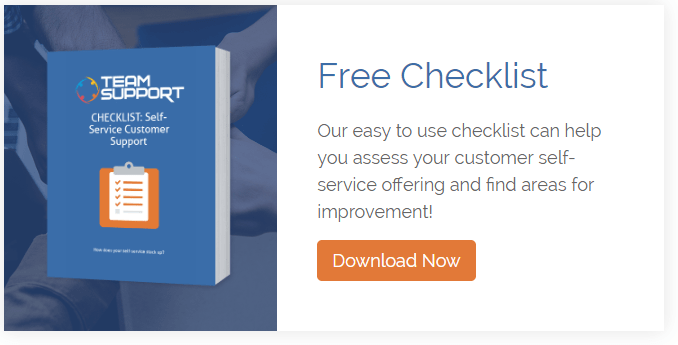The 7 Factors of Positive Self-Service Customer Experiences
As a customer, hearing the answer “go read this self-service article” from a support agent can be a frustrating experience. So many companies do self-service poorly that this type of response can feel like the agent is brushing the customer aside to focus on another issue.
However, a great self-service experience can change this feeling of being ignored to one of feeling satisfied and empowered. After all, it's usually a good feeling when you figure something out for yourself without any hand holding, and that knowledge will be in your back pocket for the future.
So, how do companies provide an excellent self-service experience? Inspired by customer experience expert Emily Potosky, here are 7 factors that play into creating self-service content to make your customers eager to work with your content to solve their own problems.
- Clarity: This is about how easy it is to understand or act on given information. If self-service content is written with clear directions that are easy to read, it will make for a better customer experience.
- Confirmation: You can have the clearest content, but if there’s not a defined end point, it’s not very useful. Confirmation relates to defining a clear final action the customer should strive towards to show that what they are working on has been completed.
- Control: Contrary to popular belief, self-service isn’t a one-way street. Instead, enable customers to share their two cents on content. Provide voting (thumbs up/down) on whether the content was helpful or put a chat link nearby the article so it’s easy for them to ask for clarity on the content.
- Credibility: Is your self-service information up to date? By having a self-service portal with answers that work now instead of 3 years ago, it improves the credibility of the experience with your customers. Keep content up to date and it will retain value in the eyes of the audience who consumes it.
- Human touch: Was your self-service content written by an engaging writer? Sometimes the best support agents on the phone don’t thrive in the same way with written communication, so make sure your content is created by someone that can translate the human touch with their writing.
- Personalization: Not all businesses have the same type of customer. One customer may be in the education software industry, while another may be a logistics service provider. The key here is to make content that is personalized for the needs of your customers. If you have popular self-service content, consider rewriting it to fit your key industries for a more personal and relatable experience.
- Variety: Sometimes written self-service content just isn’t good enough. For example, a solution that may contain ten steps in a long article can be summed up in a short video. Diversify your self-service content to fit the needs of the solution. A nice bonus here is that people learn in different ways, so video or audio content may bring in a new type of customer that isn’t a fan of written tutorials.
We hope these key factors help in creating self-service customer experiences that are impactful and make a difference. More customers across different industries are leveraging self-service than ever before, so the stakes to master the content found on a self-service portal have never been higher. All the best in creating the great content your customers want!







